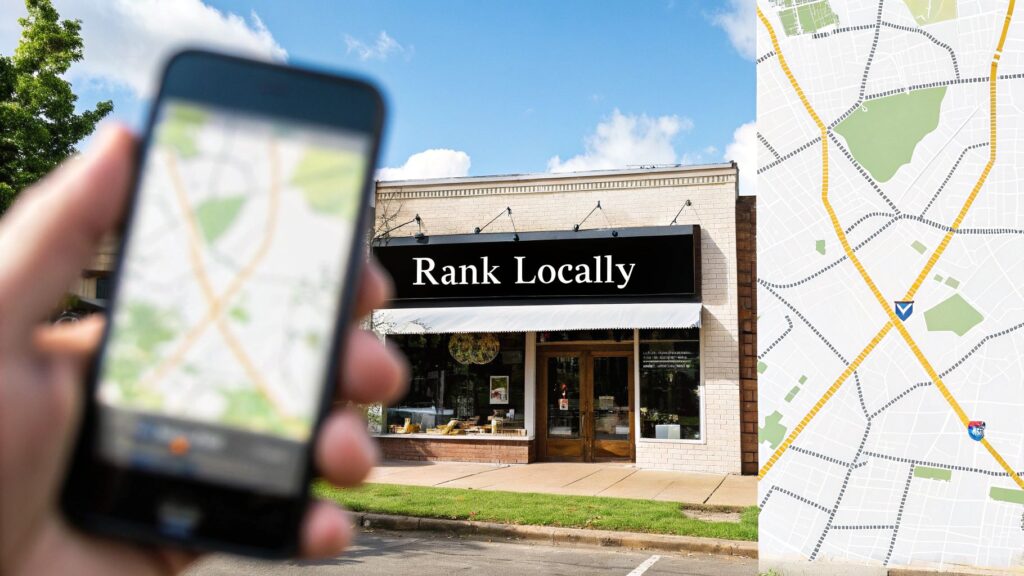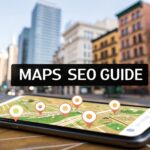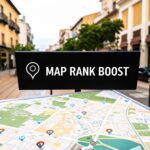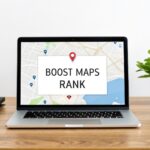When a big storm rolls through and a homeowner has a branch hanging over their roof, what's the first thing they do? They grab their phone and search "emergency tree removal near me." This is why tree service SEO is your secret weapon. It puts your business right in front of motivated customers the moment they need you.
Why SEO Is Your Best Tool for Landing Tree Service Jobs
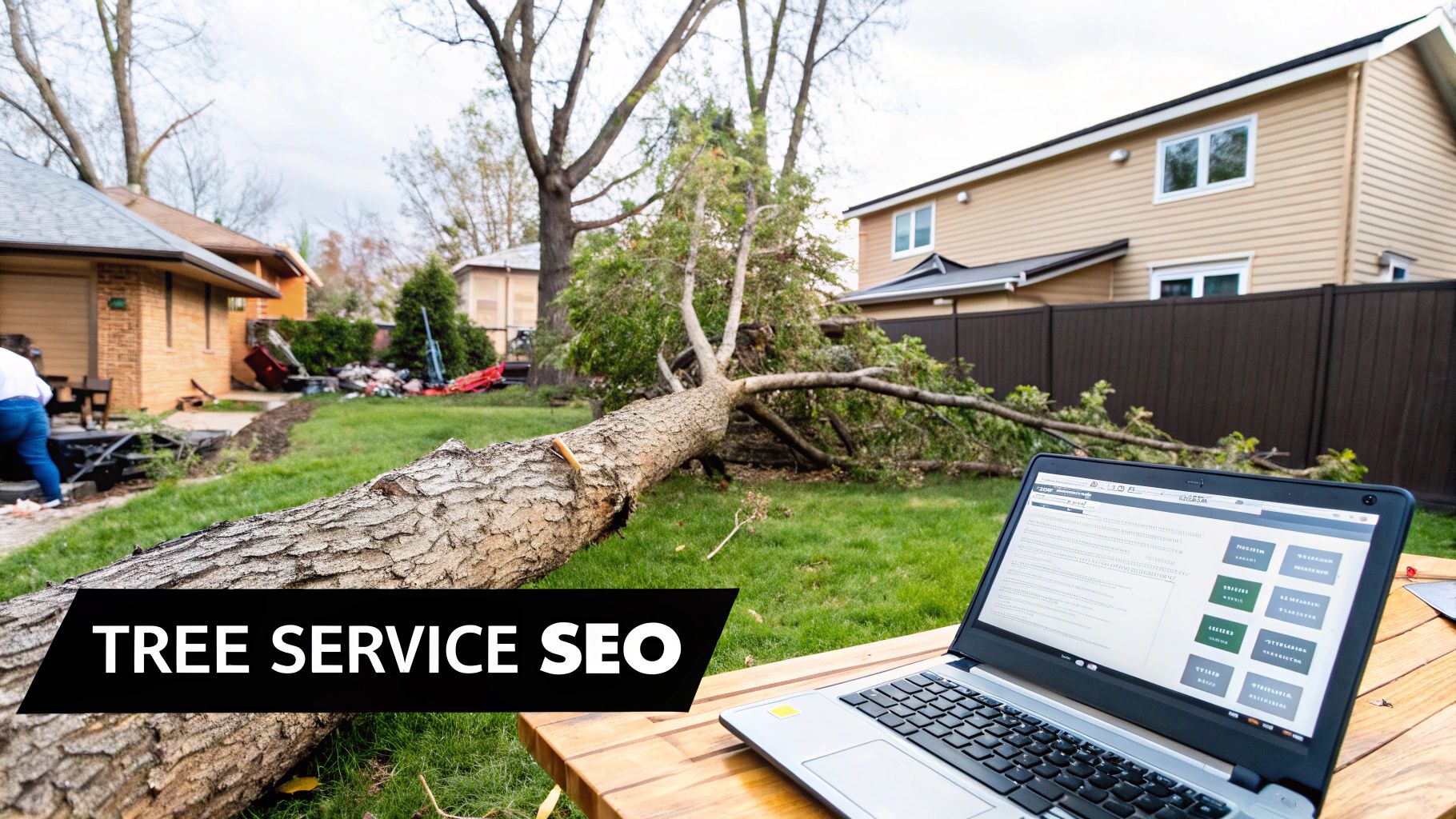
Think about how you find local services. You Google it. Your customers are no different. They aren't digging through the Yellow Pages. They're searching online, and they're ready to hire.
Good tree service SEO is all about making sure your company is the first one they see. It’s the work of tuning up your website and online presence to climb the ranks in Google, especially for local searches.
In Short: SEO helps ready-to-hire customers find your tree service online when they need you most.
Connecting With Customers Ready to Hire
Old-school advertising is like shouting into a crowd. SEO is more like talking to someone who just said, "I need help with a tree!" A person searching for "tree stump removal cost" is a much better lead than someone who just sees your truck.
This is all about capturing high-intent leads. Here’s what that means for your business:
- Better Lead Quality: The calls you get are from people who have a problem and are actively looking for a pro.
- Higher Conversion Rates: These homeowners are already in "buy mode," so they're more likely to book a job.
- A Smarter Investment: Every dollar you put into SEO is aimed at attracting customers who are ready to pay.
The tree care industry is booming. By 2025, it’s expected to be a $39.5 billion industry. More demand means more competition, which makes standing out online critical.
Building a Lasting Business Asset
Think of your SEO efforts as a long-term investment. Every blog post you write about local tree diseases or five-star review you earn builds your company's online authority. It’s an asset that grows in value over time.
If you're new to the concept, this complete guide to Search Engine Optimization is a great place to start.
SEO for your tree service isn't about tricking Google. It's about being the most visible and trustworthy choice for local homeowners right when they need you.
Find Out What Local Customers Are Googling
Smart tree service SEO starts with one simple idea: get inside your customer's head. You might call yourself an "arboricultural specialist," but your customers are just searching for "tree trimming service in [Your City]."
Using the language your customers use is the foundation of your strategy. You don't need expensive tools to figure it out. Just think like a homeowner.
Three Types of Tree Service Keywords
A good strategy uses a mix of different keyword types to catch customers at every stage.
- "I Need Help Now" Keywords: These are your money-makers. People use these when they're ready to hire someone. Think terms with words like "cost," "company," "service," or "near me."
- Specific Service Keywords: These target the exact services you provide, like "stump grinding" or "diseased oak tree help." They're perfect for building out specific pages on your website.
- "How-To" Keywords: These are all about answering questions. You help people before they need to hire a pro, which builds trust and authority.
Here are a few examples:
- Money Keywords: "emergency tree removal cost," "local tree service companies," "arborist near me for quote"
- Service Keywords: "stump grinding in Maplewood," "pruning a Japanese maple," "land clearing services"
- Informational Keywords: "signs a tree is about to fall," "how to save a dying pine tree," "best time of year to trim trees"
In Short: Ditch the industry jargon. Your entire keyword list should be built around solving real-world homeowner problems.
Let Google Be Your Guide
You don't need a paid tool to get started. Google itself is your best research assistant.
Go to Google and start typing in a main service, like "tree removal." Watch the Google Autocomplete suggestions. These are the most popular things people are actually searching for. You'll see gold like "tree removal cost" and "tree removal near me." Write them down.
Now, scroll down and look for the "People Also Ask" box. This is a goldmine for content ideas.
People Also Ask…
Here are some real questions users ask about tree services that you can answer on your site:
- How much does it cost to cut down a 50 ft tree? This tells you the person is thinking about budget and is close to hiring.
- What is the difference between an arborist and a tree cutter? Answering this on your site positions you as the expert.
- How do you tell if a tree needs to be removed? This is a perfect blog post topic. It grabs homeowners who are worried but not ready to call.
Building pages and blog posts that answer these real questions makes you the go-to expert. If you want to dig deeper, this guide on using Google's Keyword Planner is a great next step.
Turn Your Website Into a Lead-Generating Machine

Getting traffic to your website is one thing. But if it doesn't make your phone ring, what's the point? A confusing or slow site will send potential customers to your competitors. Your website should be your best salesperson—it works 24/7.
You don't need a flashy design. You need a clean, simple site that’s easy to use and shows people you’re a pro.
Give Each of Your Services Its Own Page
Imagine a customer searches for "stump grinding near me" and lands on your homepage, which only talks broadly about "tree services." They now have to hunt around. Most won't bother.
The fix is simple: create a dedicated page for every service you provide.
- Tree Removal: Have a page just for tree removal.
- Tree Trimming & Pruning: This page can dive into the benefits of proper pruning.
- Stump Grinding: Detail how your service works.
- Emergency Tree Service: Make it clear you offer 24/7 rapid response.
This strategy is a huge win for tree service SEO. It lets you pack each page with relevant keywords, telling Google exactly what you do.
What Goes on a Great Service Page?
Your goal is to answer every question a potential customer has.
Each page should have these key ingredients:
- A Clear Headline: Like "Expert Stump Grinding in [Your City]."
- A Quick Summary: Explain what the service is and what problem it solves.
- Your Process: Walk them through the steps.
- Real Photos: Show your crew in action. Before-and-after shots are great.
- A Clear Call to Action: Use big buttons that say "Call for a Free Estimate."
In Short: Sprinkle your service area towns and neighborhoods throughout these pages to show up in specific local searches.
Write Page Titles That Get Clicks
The title tag is the blue, clickable headline in Google search results. It’s your first impression. The meta description is the text snippet below it. A good one gets the click.
Here are a few simple formulas that work:
- Homepage: Your Tree Company Name | Tree Service in [City, State]
- Service Page: Professional Tree Removal in [City] | Your Company Name
- Blog Post: 5 Signs a Tree Is About to Fall | Your Company Name
Keep your title tags around 50-60 characters and meta descriptions under 160 characters.
Nail the Details
A few basic details can make or break your website's ability to get jobs.
Is Your Phone Number Unmissable?
Put your phone number everywhere. It should be in the top right corner of every page. Make sure it’s a "click-to-call" link so anyone on a smartphone can just tap it.
Show, Don't Just Tell
Real photos of your team and projects build immediate trust. They prove you're a real local business. When you upload them, give them smart filenames (like tree-removal-springfield-il.jpg) and fill out the alt text to describe the image.
Getting these on-site elements right is the foundation of a solid online presence. To see how this fits into a bigger picture, check out this guide on SEO for contractors.
Dominate Local Search with Google Business Profile
If you only do one thing, make it this: Your Google Business Profile (GBP) is the king of your tree service SEO strategy.
This free profile is what gets you on the Google Map when a homeowner searches "tree service near me." It’s your digital storefront. For most customers, it's the only thing they'll see before calling you.
They see that "map pack" with three local companies, star ratings, and a "Call" button. They almost never scroll further down. They pick one of the top three.
In Short: An optimized Google Business Profile is the fastest way to get your phone to ring with local jobs.
Getting The Basics Right
Setting up your profile is more than just adding your name and number. Every detail is a signal to Google.
- Primary Category: This must be "Tree service." It’s the most direct term.
- Secondary Categories: Add others like "Arborist" or "Landscaper" if it fits.
Next, write a good business description. Don't just say "We offer tree care." Try something like, "Your trusted local tree service for emergency tree removal and expert pruning in Springfield and surrounding areas."
Use Photos and Posts
A profile with no pictures looks sketchy. You need to show customers what you're about.
Upload high-quality photos constantly:
- Your team in action
- Your branded trucks and equipment
- Before-and-after shots
- A friendly photo of you and the crew
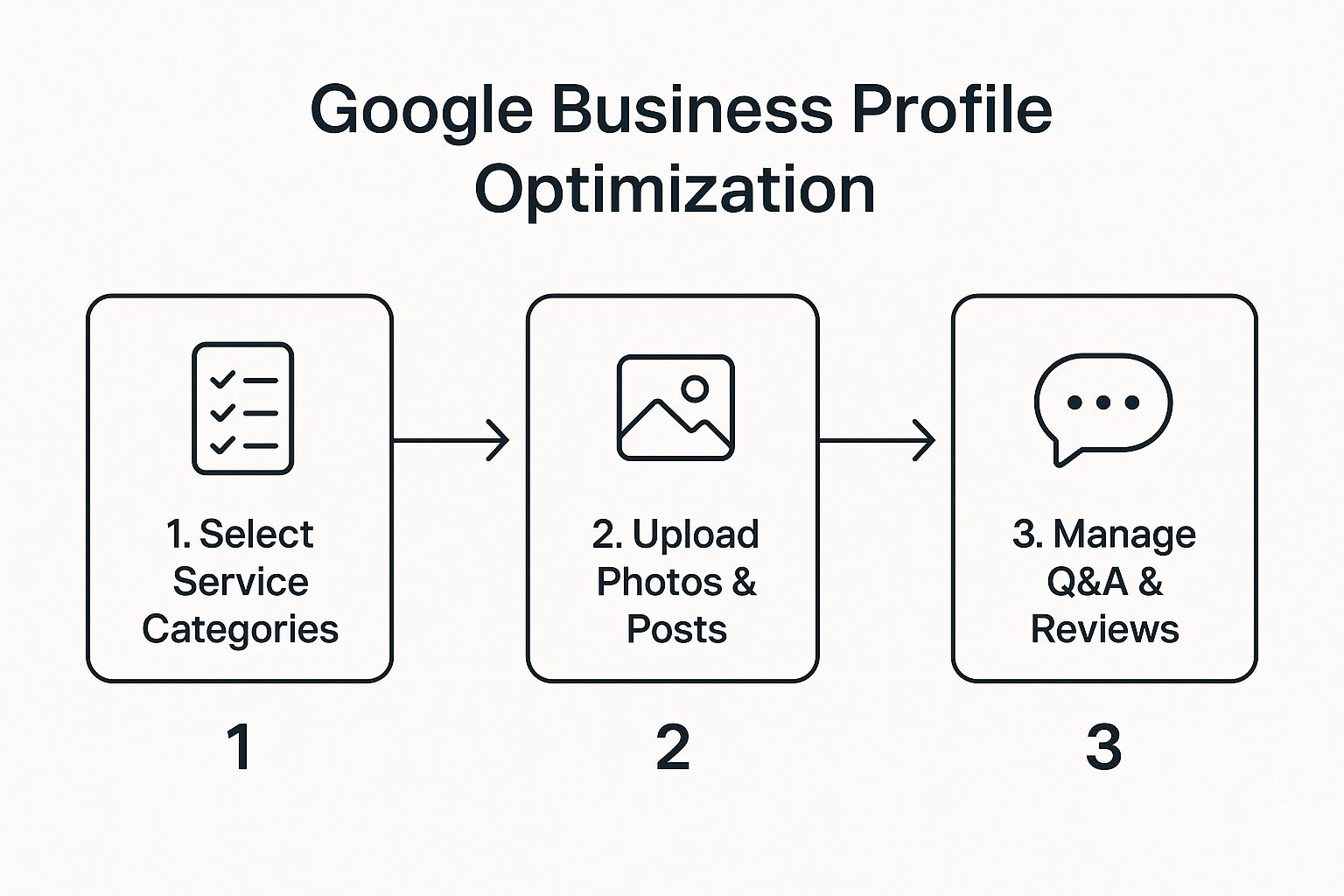
This process shows that a successful GBP requires ongoing attention.
Also, use Google Posts. Think of them like free ads on your profile. They’re perfect for seasonal deals like "Spring Pruning Specials!" or services like "24/7 Storm Damage Cleanup."
Google Business Profile Optimization Checklist
| Optimization Area | Action Item | Why It Matters |
|---|---|---|
| Core Information | Verify your business name, address, and phone number (NAP) are 100% consistent everywhere online. | Inconsistency confuses Google and hurts your local ranking. This is a foundational trust signal. |
| Categories | Set "Tree service" as your primary category. Add relevant secondary ones like "Arborist." | This is the most direct way to tell Google what you do and what searches to show you for. |
| Service Area | Define the specific cities, towns, or even zip codes you serve. | This tells Google exactly where your customers are, ensuring you show up in relevant local searches. |
| Description | Write a compelling description including your main keywords and city names naturally. | It helps both customers and Google understand your expertise and service focus. |
| Photos & Videos | Regularly upload high-quality photos of your team, trucks, and work (before/after). | Builds trust and visually demonstrates the quality of your work, making customers more likely to call. |
| Google Posts | Publish weekly posts about offers, recent jobs, or seasonal tips. | Keeps your profile fresh, engages customers, and provides another opportunity for keywords. |
| Q&A Section | Proactively add and answer common questions (e.g., "Are you insured?"). | Controls the narrative, provides helpful info to potential customers, and lets you use keywords. |
| Reviews | Actively request reviews from happy clients and respond to every single one (good and bad). | Reviews are a huge ranking factor. Responding shows you're engaged and care about customer service. |
Following this checklist is one of the most important things you can do for your business.
Answer Questions and Build Social Proof
Your GBP has a Questions & Answers section. Most competitors ignore it.
Think about the top 3-5 questions you always get. "Are you licensed and insured?" "Do you offer free estimates?" Go to your own profile, ask those questions, and then answer them yourself.
A well-managed GBP is the fastest path to more calls. For a deeper dive, check out this guide on mastering local maps SEO.
Finally, reviews are a massive ranking factor. Ask every happy customer to leave one. Just as important, respond to every single review. To learn more about getting jobs, you can boost your business with local SEO for small businesses.
Build Trust with Reviews and Local Listings
Online, your reputation is everything. A customer needs to trust you before they invite a crew with powerful equipment onto their property.
Two of the biggest trust builders are customer reviews and consistent local directory listings. These are a key part of any tree service SEO plan.
Turn Happy Customers Into Marketers
Think about the last time you hired someone. You probably checked their Google reviews first. A steady stream of recent, positive reviews is gold.
The secret is simple: you just have to ask. Most happy customers are willing to leave a review if you make it easy. The best time to ask is right after the job is done.
Here’s a simple process:
- Get a Direct Link: Grab the direct link to leave a review on your Google Business Profile.
- Send a Simple Message: A few hours later, send a quick thank you email or text with the link.
- Make It Personal: Mention something specific, like, "Hope you enjoy the extra sunlight!"
This quick follow-up can radically increase your reviews.
Always Respond to Every Review
Responding to reviews—good and bad—shows you are an engaged business owner who cares.
For good reviews, a simple "Thanks, John! It was a pleasure," is perfect. For a rare negative review, stay professional. Thank them for the feedback and offer to solve the issue offline.
What Are Local Directory Listings?
These are also called citations. They are just mentions of your business's Name, Address, and Phone number (NAP) on sites like Yelp, Angi, and the Better Business Bureau.
In Short: Every time Google finds your business listed with the exact same NAP on a reputable site, it builds trust and improves your ranking.
Inconsistency is your enemy. If one directory lists you as "Joe's Tree Service" and another has "Joe's Tree Care," it creates confusion that can hurt your rankings.
Keep Your Business Information Consistent
Do a quick audit. Google your business name and check the major directories to ensure your NAP is identical everywhere.
- Name: Is it exactly the same, including "LLC" or "Inc."?
- Address: Is "Street" abbreviated as "St." on one site but spelled out on another? Fix it.
- Phone Number: Is it your primary business line?
Fixing these inconsistencies is critical for building trust with Google. This helps you land more profitable jobs. The tree care industry can have great margins, from 10% to 20% on average. Specialized services can see margins between 30% and 50%. Find more insights about tree service company profits at arbostar.com.
Your Top Tree Service SEO Questions Answered
If you're new to SEO, it's normal to have questions. It can feel overwhelming at first. Here are straight answers to the questions I hear most often.
How Long Does It Take for Tree Service SEO to Work?
It’s a long game. Think of it like planting a tree, not flipping a switch. You're building a valuable asset that pays off for years.
However, some things, like optimizing your Google Business Profile, can show results quickly. You might pop into the map pack in just a few weeks.
In Short: You should see a noticeable increase in traffic and leads within 3 to 6 months of consistent work. SEO is about earning Google's trust, which takes time.
Do I Really Need a Blog on My Tree Service Website?
Yes, absolutely. A blog is one of the most powerful tools you have. It's where you prove you’re the local expert on all things trees.
Your main service pages are for people ready to hire now. Your blog is for everyone else—the people still figuring out their problem.
Here’s why it’s a game-changer:
- You Grab People Early: You can answer questions people ask before they search for a company, like "how to tell if a tree is dead."
- It Builds Trust: When you freely share your expertise, people see you as the go-to pro.
- It Feeds Google: Every helpful article is another chance to rank. It shows Google your website is a deep resource.
Is Paying for Ads Better Than SEO?
It's not an "either/or" question. Smart businesses use both.
Paid ads (like Google Ads) are like renting a billboard. You pay, you get seen. The second you stop paying, you vanish. It's great for getting the phone to ring today.
SEO is like buying the land and building your own store. It takes more work up front, but you get a steady stream of customers for free. This is your engine for long-term growth.
The best strategy? Use ads to generate immediate cash flow while your SEO builds a solid foundation.
What's the Single Most Important First Step in Local SEO?
If you only have time for one thing, do this: Claim and completely fill out your Google Business Profile (GBP). This is the most critical first step for any local tree service.
Your GBP has the biggest and fastest impact on whether you show up in the local map results. Before you do anything else, make sure your profile is 100% complete.
That means picking the right categories, writing a great description, uploading lots of photos, and getting a steady flow of customer reviews. It's the highest-leverage task you can do.
At Clicks Geek, we specialize in turning your online presence into a predictable source of high-quality leads. If you're ready to stop guessing and start getting real results from your marketing, explore our proven digital marketing solutions at https://clicksgeek.com.
Is Your Business Ranking in Google Maps?
Turn Google Maps into a Lead Engine w/ Clicks Geek’s AI-powered local SEO. 3,000+ clients served. Our proprietary, fully done-for-you Maps SEO system handles everything—keyword targeting, local optimization, content, reviews, and ranking strategy—automatically.


